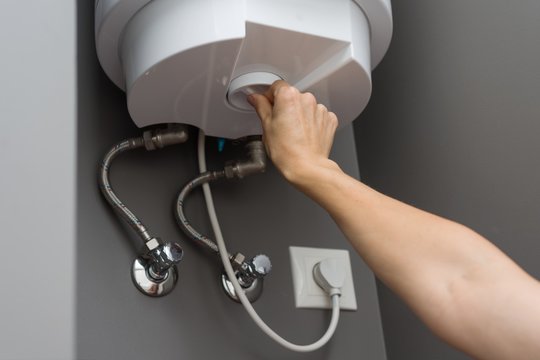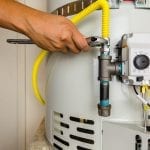They are making several great points on the subject of Water Heater Maintenance Tips You Can't Afford to Forget overall in this great article followed below.

Warm water is essential for everyday comfort, whether it's for a refreshing shower or cleaning dishes. To guarantee your warm water system runs effectively and lasts much longer, regular upkeep is essential. This write-up offers sensible tips and understandings on how to preserve your home's warm water system to avoid interruptions and expensive fixings.
Introduction
Keeping your home's warm water system may appear challenging, however with a couple of easy steps, you can ensure it runs efficiently for several years ahead. This overview covers every little thing from recognizing your hot water system to DIY maintenance ideas and knowing when to hire expert aid.
Importance of Preserving Your Warm Water System
Regular maintenance not just extends the life expectancy of your hot water system yet additionally guarantees it operates effectively. Ignoring upkeep can cause lowered performance, higher energy bills, and even premature failure of the system.
Indications Your Hot Water System Requirements Upkeep
Understanding when your warm water system requires attention can stop significant problems. Keep an eye out for indicators such as irregular water temperature level, weird noises from the heating unit, or rustic water.
Purging the Hot Water Heater
Purging your hot water heater gets rid of debris buildup, improving effectiveness and extending its life.
Checking and Replacing Anode Rods
Anode poles protect against deterioration inside the storage tank. Checking and replacing them when worn is vital.
Facility Concerns Requiring Professional Assistance
Instances consist of significant leakages, electric troubles, or if your hot water heater is continually underperforming.
Regular Specialist Upkeep Benefits
Expert maintenance can include extensive assessments, tune-ups, and ensuring compliance with security criteria.
Evaluating and Readjusting Temperature Setups
Changing the temperature settings ensures optimum performance and safety.
Do It Yourself Tips for Upkeep
You can carry out numerous upkeep jobs on your own to maintain your hot water system in leading problem.
Looking for Leaks
Frequently inspect pipelines and connections for leakages, as these can cause water damage and higher costs.
Comprehending Your Hot Water System
Prior to diving into upkeep tasks, it's helpful to understand the standard elements of your warm water system. Usually, this includes the hot water heater itself, pipelines, anode rods, and temperature level controls.
Monthly Upkeep Tasks
Regular regular monthly checks can aid catch small issues prior to they rise.
Evaluating Stress Relief Valves
Checking the pressure relief valve guarantees it functions correctly and stops excessive pressure build-up.
Insulating Pipelines
Insulating hot water pipes minimizes warmth loss and can save power.
When to Call a Specialist
While DIY upkeep is beneficial, some issues need specialist competence.
Verdict
Regular maintenance of your home's warm water system is necessary for effectiveness, longevity, and expense financial savings. By following these suggestions and understanding when to look for professional help, you can guarantee a trusted supply of hot water without unexpected interruptions.
Water Heater Maintenance: The Basics
Maintaining your water heater will ensure it operates efficiently and has a longer lifespan. Neglecting regular maintenance can lead to costly repairs and an even bigger chunk of your savings if you have to replace it sooner than necessary. But there’s good news: Most water heater maintenance tasks are relatively simple and easy for homeowners with basic DIY skills.
Flush the Water Heater
Over time, sediment and minerals can build up in the tank, reducing its efficiency and potentially causing damage. To flush the tank, turn off the power or gas supply, attach a hose to the drain valve near the bottom and open the valve to drain the water until it runs clear. Ideally, flush the tank annually.
Replace the Anode Rod
The anode rod is a sacrificial metal rod that helps prevent corrosion inside the tank. Inspect and replace it every three to five years or per the manufacturer's recommendation. To replace the anode rod, turn off the power or gas supply, drain a few gallons of water from the tank, unscrew the old rod and replace it with a new one. If the anode rod is significantly corroded or covered in calcium buildup, it's a sign the water heater may need to be replaced soon.
Tune-Up
A yearly tune-up can help identify potential issues and ensure your water heater operates at peak efficiency. This typically involves checking the thermostat, burner assembly (for gas heaters) and any other components specified by the manufacturer. During a tune-up, the technician may also clean the burner and adjust the pilot light (for gas heaters) or examine the heating elements (for electric heaters).
How to Maintain Your Water Heater
Insulate the tank. Insulating the tank can improve energy efficiency and reduce heat loss, saving you money on energy bills. You can purchase precut insulation blankets designed specifically for water heaters or use standard fiberglass insulation wrapped securely around the tank. Check the temperature. The recommended water temperature for most households is around 120 degrees Fahrenheit (49 degrees Celsius). Higher temperatures can increase energy costs and potentially cause scalding. Use a kitchen thermometer to check the temperature at the faucet nearest the water heater. Monitor water pressure. Excessive water pressure can strain the water heater and cause leaks or even tank failure. Install a pressure-reducing valve if necessary. The ideal water pressure range is between 60 and 70 PSI (pounds per square inch). Test the temperature and pressure (T&P) relief valve. The T&P relief valve is a safety feature that releases pressure if the tank gets too hot or the pressure builds up too high. Test it annually by lifting the lever and allowing a small amount of water to release. Replace the valve if it doesn't release water or reseal properly. Check for leaks. Regularly inspect the tank, pipes and fittings for leaks or corrosion. Deal with issues promptly to prevent further damage. Even a small leak can lead to significant water damage over time. Consider a tankless water heater. If your traditional tank-style water heater is nearing the end of its lifespan ( typically 10 years), consider replacing it with a tankless water heater. These units heat water on demand, reducing standby energy losses and potentially saving you money on your energy bills. Schedule professional maintenance. While homeowners can perform many water heater maintenance tasks, it's still a good idea to schedule professional maintenance every few years. A plumber or HVAC technician can thoroughly inspect the unit, identify potential issues and ensure it operates safely and efficiently. https://www.homeserve.com/en-us/blog/home-improvement/hot-water-heater-maintanence/

Do you enjoy more info about What Kind of Maintenance Do Water Heaters Need?? Place a remark directly below. We will be pleased to listen to your views about this page. In hopes that you visit us again before long. Sharing is caring. Helping people is fun. Thanks so much for your time invested reading it.
Request An Estimate